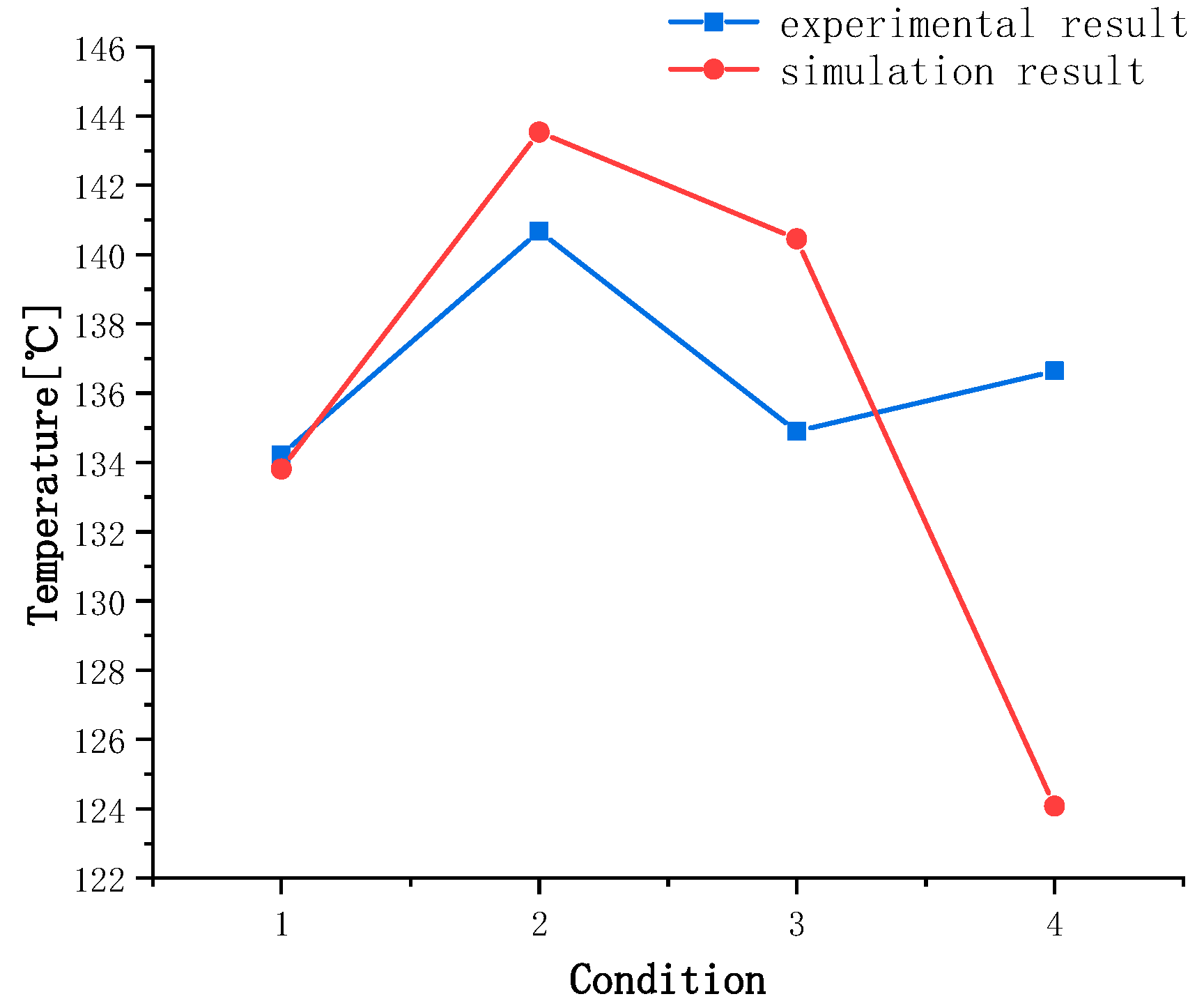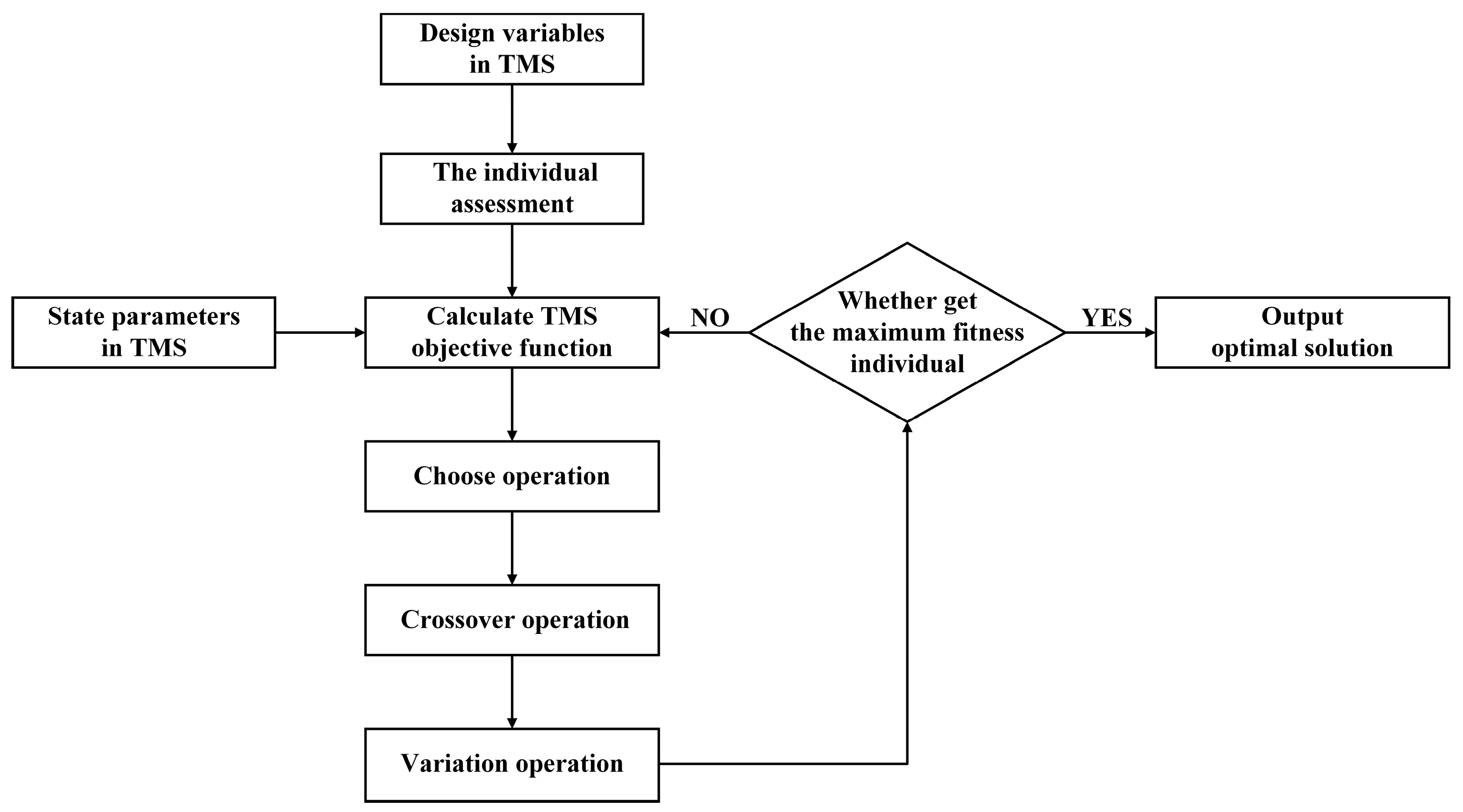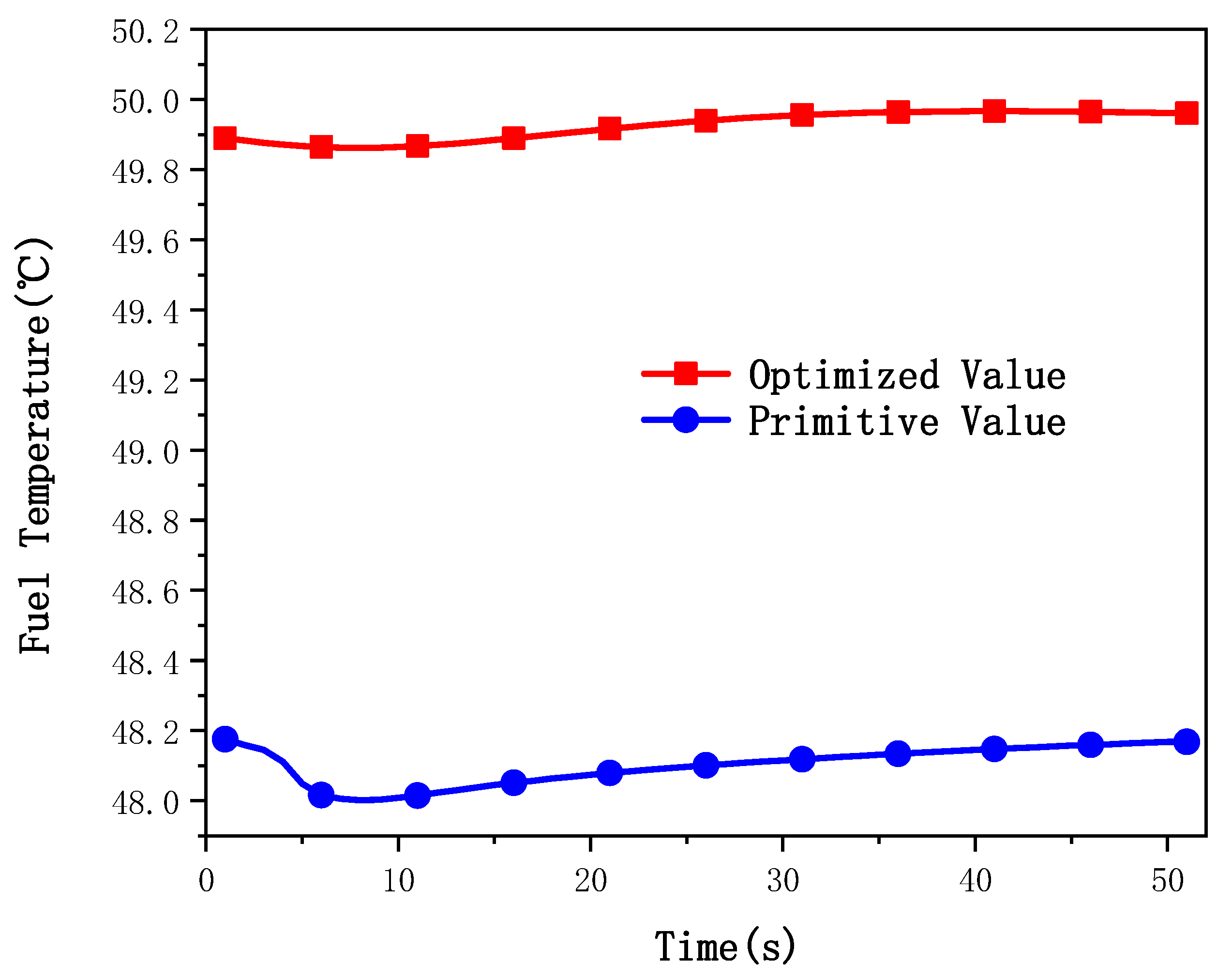2.1. System Modeling
As illustrated in
Figure 1, the primary components of fuel TMSs include a hydraulic loop subsystem, a coolant loop subsystem, an oil loop subsystem, and a ram air-cooling subsystem.
Fuel, being the primary heat sink material, is utilized in TMSs to absorb and transfer heat away from the aircraft. Initially, fuel from a low-temperature tank is directed into the hydraulic loop subsystem, which is parallel to the fuel TMS. Here, the fuel is warmed in the hydraulic-fuel heat exchanger (HX), thus reducing the temperature of the hydraulic oil. The heated fuel then flows directly to the return line.
Simultaneously, another portion of the fuel enters the coolant loop subsystem, which is serially connected to the fuel TMS, excluding the hydraulic loop subsystem. In this subsystem, coolant fluid absorbs the heat load from electronic equipment. This heated coolant fluid first exchanges heat with the ram air in the coolant-ram air HX, after which the cooler coolant fluid transfers heat to the fuel in the coolant-fuel HX. The cooled coolant fluid is then circulated back to the electronic equipment via a pump.
The heated fuel subsequently flows into the next subsystem, the oil loop subsystem, which is connected in series with the fuel TMS. In the oil loop subsystem, the fuel exchanges heat with high-temperature oil via the oil-fuel HX, lowering the temperature of the oil. Upon absorbing this heat load, the even hotter fuel is directed into the engine.
Upon reaching the engine inlet, some of the high-temperature fuel is combusted in the engine, while the remaining excess fuel is cooled by a ram air-cooling subsystem and returned to the fuel tank. Before cooling, this high-temperature fuel is mixed with heated fuel from the hydraulic loop subsystem and enters the return fuel cooling subsystem. Here, low-temperature ram air exchanges heat with the fuel in the fuel-ram air HX, after which the cooled fuel returns to the tank.
In the fuel TMS, the low-temperature fuel in the fuel tank is pumped through a pipeline where it absorbs heat from other subsystems through heat exchangers. Ultimately, a portion of the high-temperature fuel is used for combustion, while the rest is cooled by ram air and returned to the fuel tank. Throughout this process, heat is primarily exchanged through pumps, pipelines, and heat exchangers.
2.2. Thermal Modeling
As shown in
Figure 1, the thermal models of the aforementioned structures are established as follows:
(1) Pump
The outlet pressure of the pump (
) can be defined as:
The pump’s efficient power (
) is given by:
The pump’s shaft power is:
The rise in fuel temperature (
) between the inlet and outlet of the pump can be calculated as:
where
represents the inlet pressure,
stands for the pressure rise of the pump,
is the volume flux,
signifies the pump’s efficiency,
refers to the specific heat of the fuel, and
denotes the fuel flux.
In the simulation, the similarity law is applied. Under different rotational speeds, the rated conditions are determined according to the principle of a similar pump. Subsequently, the analogous results of flow, pressure increase, and power are obtained under varying situations:
Here, is the rated speed, is the rated diameter, and is the fluid density. The parameters at the inlet and outlet of the pump structures and related performance parameters are further calculated based on these state parameters’ results.
(2) Pipeline
The oscillating flow characteristics for the pipeline are given by:
The heat transfer characteristics for the pipeline are:
where
represents the working fluid flow,
stands for the pressure drop, A is the sectional area,
signifies the heat capacity of the working fluid, and
denotes the specific enthalpy.
(3) Heat exchanger
The heat exchanger is calculated utilizing the ε-NTU method:
Here, , and represent the inlet temperature on the hot side and cold side, and stand for the mass flow on the hot side and cold side, and signify the smaller value and larger value of the water equivalent, respectively, U represents the overall heat transfer coefficient, which is determined by the structure of each HX, A stands for the heat transfer area of each HX, and denotes the heat exchange efficiency.
2.3. Model Validation
In order to verify the accuracy of the model simulation calculation by AMEsim, before the model optimization calculation, the experimental data in [
29] is taken as a reference, and the simulation calculation results are compared and analyzed. The experiments were carried out under four conditions, including that the experimental data are the outlet temperature of the fuel pump. The experimental results are shown in
Table 1.
With the same conditions, and the numerical simulation of the model was carried out. Compared with the experimental results, the numerical simulation results are shown in
Figure 2. Among four conditions, the simulation results agree well with the experimental data, and the maximum error is only 9.2%. Therefore, the simulation results obtained by mathematical model are reliable. Meanwhile, the TMS model is validated.














